Voyager’s “Cosmic Map” of Earth’s location is hopelessly wrong
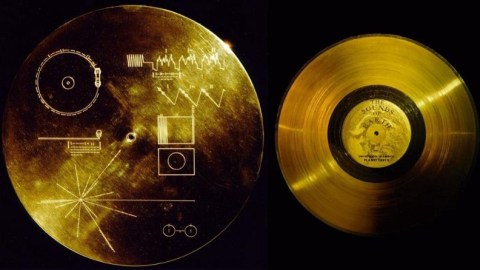
The pulsar map to Earth was perfect when it was launched. By time aliens get it, it’ll be completely useless.
“We [are] a species endowed with hope and perseverance, at least a little intelligence, substantial generosity and a palpable zest to make contact with the cosmos.” –Carl Sagan
Forty years ago, the Voyager spacecrafts were launched, destined to become the first human-created objects to leave the Solar System. As they traveled away from Earth and into interstellar space, they carried a special message for anyone who’d find them in the far future: the Voyager Golden Record. Containing songs, images, and sounds of Earth, it was designed to be an information-laden cosmic time capsule, capable of being easily deciphered by any intelligent alien species to come upon it. On the cover of the record, a series of diagrams was emblazoned, including one very important one: a map of Earth’s location in the galaxy. Although the method used to locate Earth was very clever, it’s now understood to be inherently flawed, meaning anyone receiving it will most likely be unable to track down exactly where our planet is, after all.
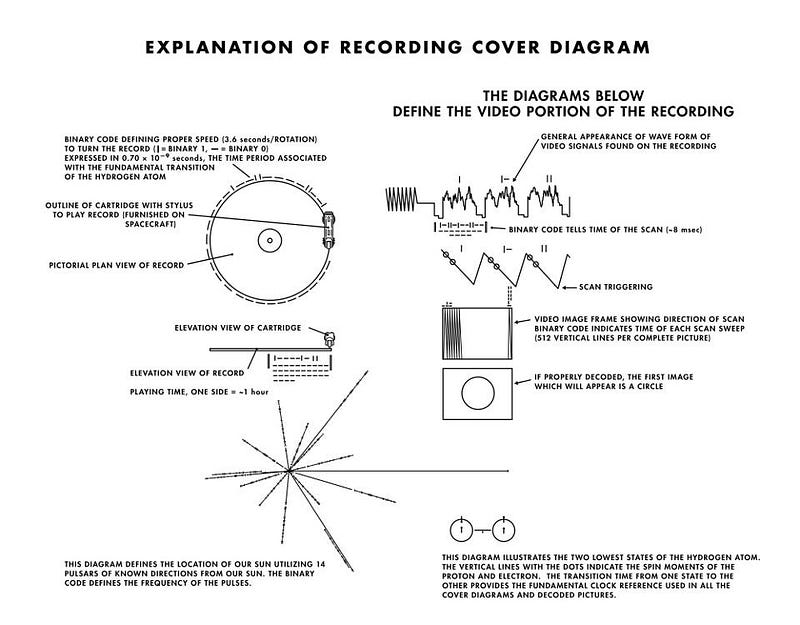
If you want to know where our Sun is located in the galaxy, it’s absolutely essential to have some sort of reference frame. We could have shown what our night sky looks like, but that changes significantly over timescales as short as thousands of years, since the stars are all moving relative to one another. We could have mapped out the intrinsically brightest stars, located at larger distances, but they could die in supernovae or collapse into black holes without warning. Instead, we went with a map of pulsars.
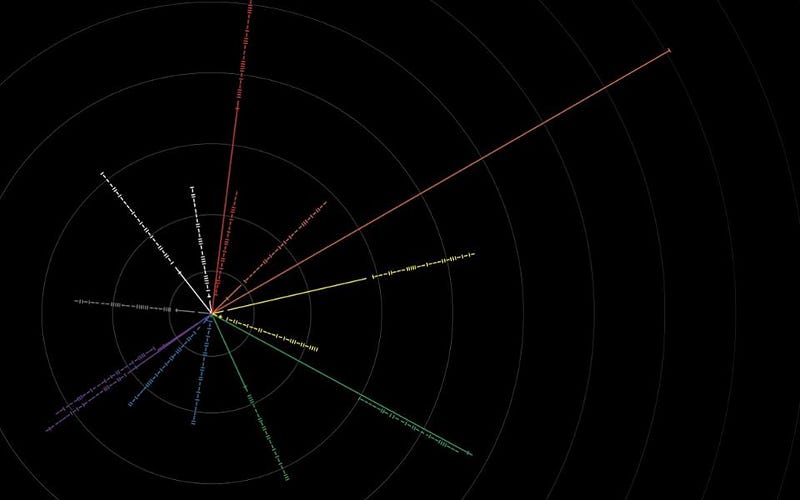
Located throughout the galaxy, the Voyager golden records are emblazoned with the relative orientations, distances, and pulse timing frequencies of 14 different pulsars. (The Pioneer 10 and 11 missions also have the pulsar information on them.) Located thousands of light years away, these pulsars are some of the most accurate, reliable clocks in the Universe. Though their relative positions will change as the stars orbit the Milky Way, they’ll remain identifiable by their pulse frequency and by their approximate position from the Sun, which will both remain relatively stable for tens of millions of years.
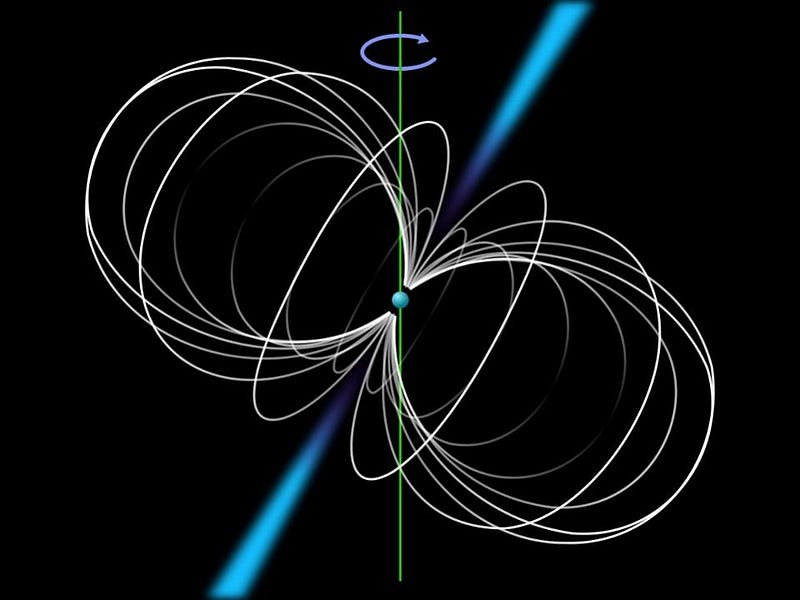
In fact, based on how both of those quantities change over time, people will not only be able to reconstruct where Earth and our Sun is when they find it, they’ll be able to figure out when those space probes were launched. It seemed like such a clever decision to choose these objects at the time. Pulsars are neutron stars — massive balls of neutrons more massive than the Sun, but only a few kilometers in diameter — that rotate extremely rapidly. Due to the charged particles that exist on their surfaces and their rapid rotation which can approach up to 65% the speed of light, these objects generate the strongest magnetic fields known in the Universe: trillions or even quadrillions of times as strong as the magnetic fields on Earth.
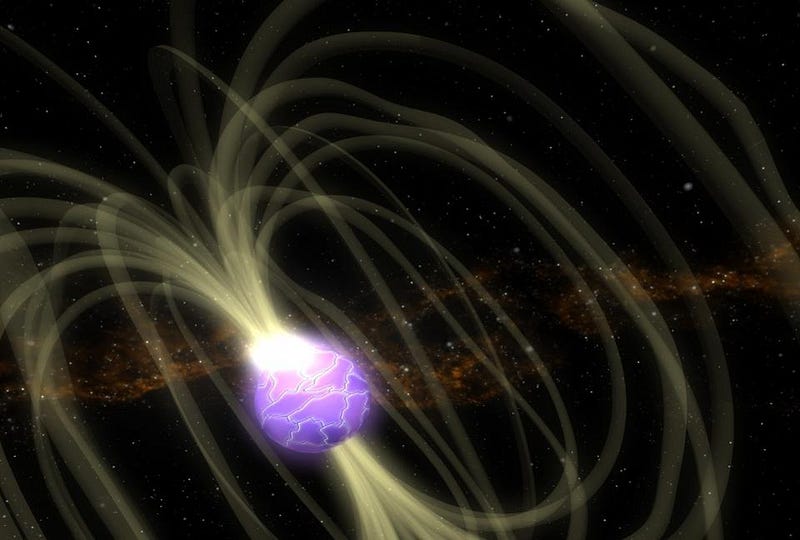
These strong fields accelerate charged particles in their vicinity, and cause the emission of electromagnetic radiation. Each time the neutron star completes a rotation, any object in the path of that radiation receives a “pulse,” and the ones that are pointed at us are identifiable as pulsars. These 14 objects identified to create an Earth-finding map are indeed pulsars, and so the plan seemed like a good one. But since the late 1970s, we’ve discovered two very inconvenient facts that will most likely render Earth infuriatingly unfindable by any intelligent alien life that happens to locate it.
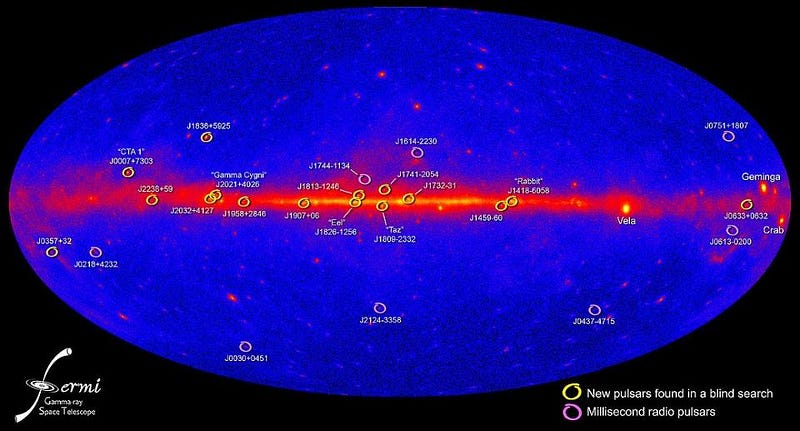
1.) There are likely about one billion pulsars in the Milky Way. Based on the history of stars and star-formation in the Milky Way, we’ve been able to determine that even though only a fraction of 1% of them go supernova, there are incredible numbers of neutron stars and black holes out there. There are some 400 billion stars in the Milky Way today, and recent work has shown that there are approximately 100 million black holes in the Milky Way, with ten times as many (one billion) neutron stars. Almost all neutron stars have the properties to make them pulse, which just means their spin-axis and their magnetic-axis aren’t perfectly aligned. To know which 14 are chosen out of one billion will be a daunting task, since pulsar periods are not unique.
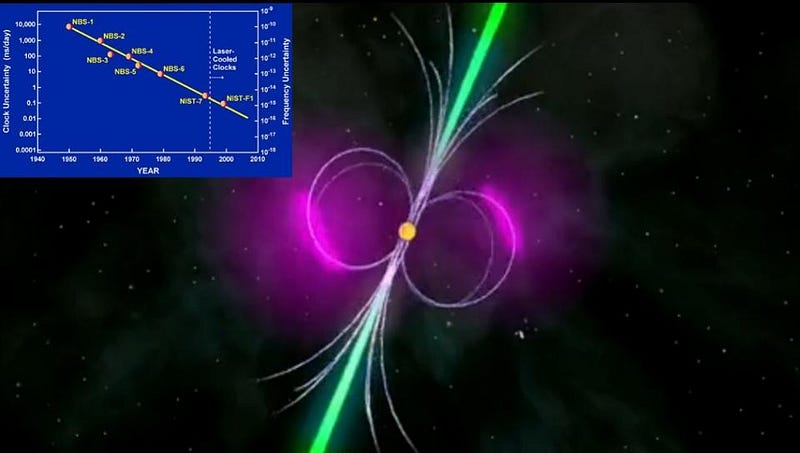
2.) Which pulsars point their pulses at Earth change over time in an unpredictable fashion. Most neutron stars don’t appear as pulsars to us, simply because their “pulses” aren’t lined up with planet Earth. But over time, pulsars can newly appear or disappear, which we’ve actually seen happen since the Voyager probes were launched. As objects rotate and orbit in space, their relative orientations change, so the pulsars that are pointing at us today won’t be pointing at us millions of years in the future. Additionally, pulsars that aren’t pointing at us today will be pointing at us in millions of years. Compound that with the fact that neutron stars adjust their rotation periods over time (via starquakes and pulsar speedup), and it’s clear that both the periods and orientations of these pulsars change dramatically over millions of years. By the time any alien picks up our pulsar map, it will be woefully out-of-date.
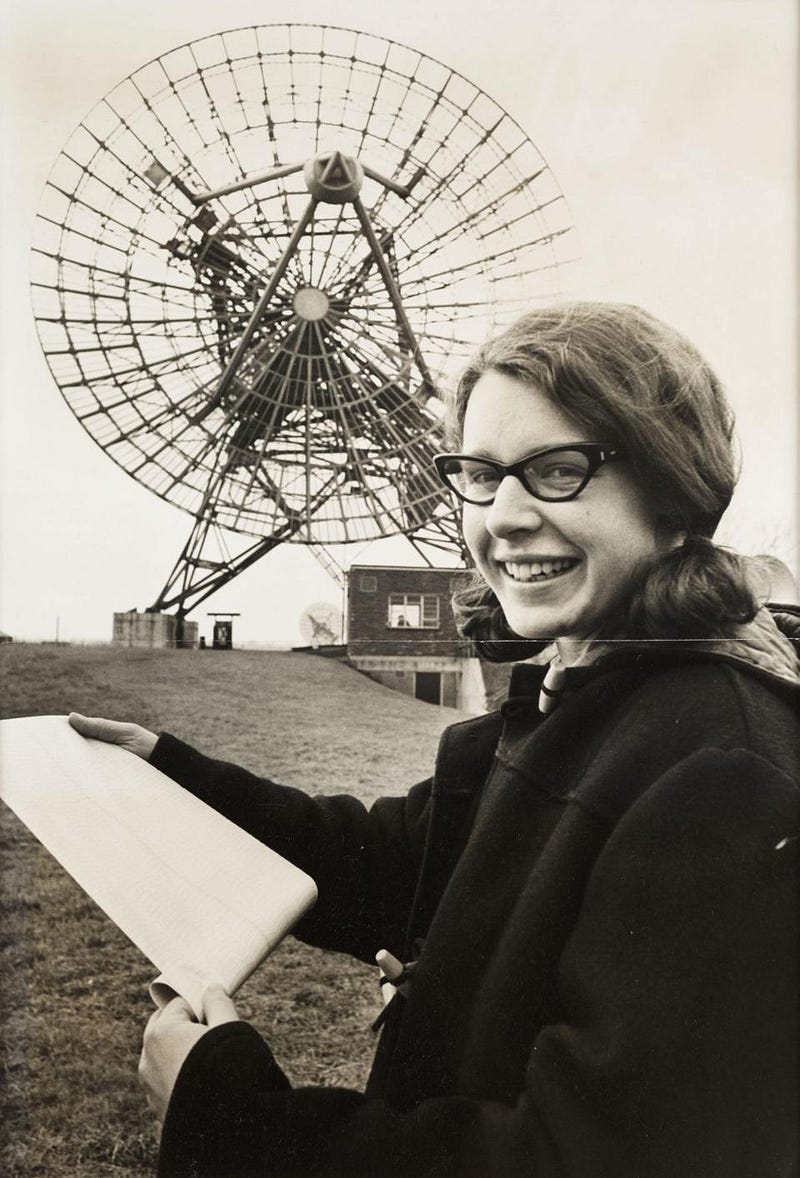
Pulsars were only first discovered 50 years ago (by Jocelyn Bell-Burnell, above) in 1967; they were incredibly novel still when the Pioneer and Voyager spacecraft were launched. Now that we have a better understanding of how they work, how ubiquitous they are, and how their apparent properties change over time, we can see that these are terrible long-term beacons! In hindsight, it would have been better to put together the astronomical properties of the Sun, along with the masses, radii, atmospheric contents, and orbital parameters of the planets. After all, those are the pieces of information we use to identify exoplanet systems today, and would be the best way to, on a long-term basis, identify our Solar System.
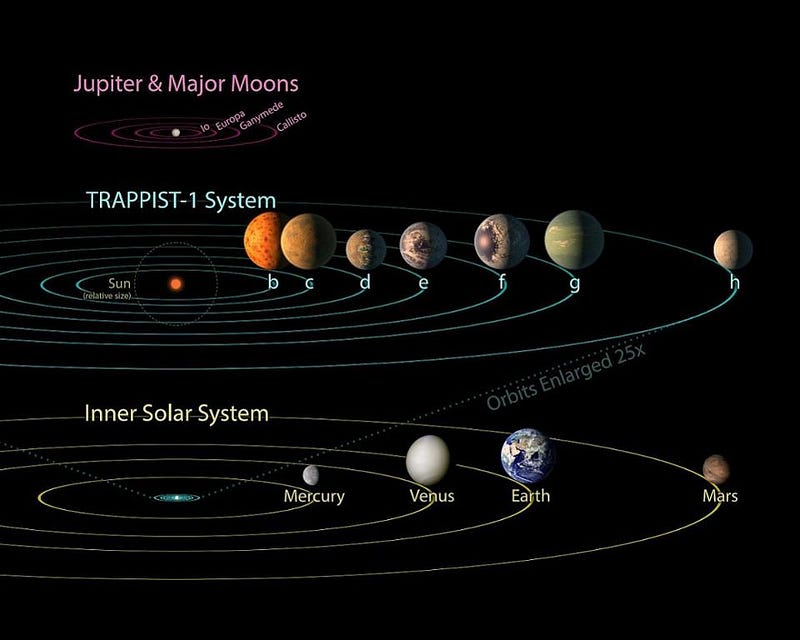
Instead, we send out a primitive message, however well-intended it was. While fear-mongers foolishly claim that hostile aliens could follow the Voyager maps back to Earth, the maps themselves are actually among the most useless information aboard Voyager. According to Frank Drake, who worked on the Voyager message with Carl Sagan:
“We needed to put something on the Voyager that said where it came from, and how long it was traveling… There was a magic about pulsars … no other things in the sky had such labels on them. Each one had its own distinct pulsing frequency, so it could be identified by anybody, including other creatures after a long period of time and far, far away.”
Although these identifiers were thought to be unique and stable, we now know that long-term changes will render this map useless. If you tried to identify Earth by the presence of Pangaea, you’d be sorely disappointed. By sending the messages we did with Voyager, we actually delivered a much more challenging problem to any aliens “lucky” enough to come upon it. The idea to send pulsar positions and frequencies was a brilliant one, but by the time anyone receives it, they’ll only encounter one of the most difficult-to-decipher riddles we could have possibly imposed.
Ethan Siegel is the author of Beyond the Galaxy and Treknology. You can pre-order his third book, currently in development: the Encyclopaedia Cosmologica.





